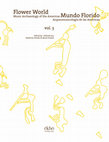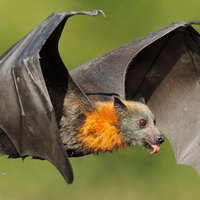Papers by Alejandro Morris De la Rosa

Since the dawn of public architecture in the Andes, the sounds of shell trumpets accompanied rite... more Since the dawn of public architecture in the Andes, the sounds of shell trumpets accompanied rites through which social order was reproduced. This paper summarises research on over two
hundred such aerophones, some fashioned from marine conches others modelled in pottery; bringing together results from experiments in the production, performance techniques and acoustic characterization of Caribbean (Strombus gigas and Turbinella angulata) and Pacific (Strombus galeatus, Strombus peruvianus, Malea ringens, and Triplofusus princeps) gastropod species. Application of Mel spectral coefficients (MFCC) to semianechoic chamber recordings allowed a characterization of the sound of each species. During ensemble performances specific tone combinations required for the production of beats were detected and low frequency Tartini tones were perceived. The diversity of distinct timbres within a specific tonal range suggests that the production of ceramic aerophones was not necessarily linked to the availability of natural conch shells but guided by acoustic choice.










Uploads
Papers by Alejandro Morris De la Rosa
hundred such aerophones, some fashioned from marine conches others modelled in pottery; bringing together results from experiments in the production, performance techniques and acoustic characterization of Caribbean (Strombus gigas and Turbinella angulata) and Pacific (Strombus galeatus, Strombus peruvianus, Malea ringens, and Triplofusus princeps) gastropod species. Application of Mel spectral coefficients (MFCC) to semianechoic chamber recordings allowed a characterization of the sound of each species. During ensemble performances specific tone combinations required for the production of beats were detected and low frequency Tartini tones were perceived. The diversity of distinct timbres within a specific tonal range suggests that the production of ceramic aerophones was not necessarily linked to the availability of natural conch shells but guided by acoustic choice.
hundred such aerophones, some fashioned from marine conches others modelled in pottery; bringing together results from experiments in the production, performance techniques and acoustic characterization of Caribbean (Strombus gigas and Turbinella angulata) and Pacific (Strombus galeatus, Strombus peruvianus, Malea ringens, and Triplofusus princeps) gastropod species. Application of Mel spectral coefficients (MFCC) to semianechoic chamber recordings allowed a characterization of the sound of each species. During ensemble performances specific tone combinations required for the production of beats were detected and low frequency Tartini tones were perceived. The diversity of distinct timbres within a specific tonal range suggests that the production of ceramic aerophones was not necessarily linked to the availability of natural conch shells but guided by acoustic choice.